The difficult path to perfection. On the evolution of testing methods for naval artillery shells in the period 1886–1914
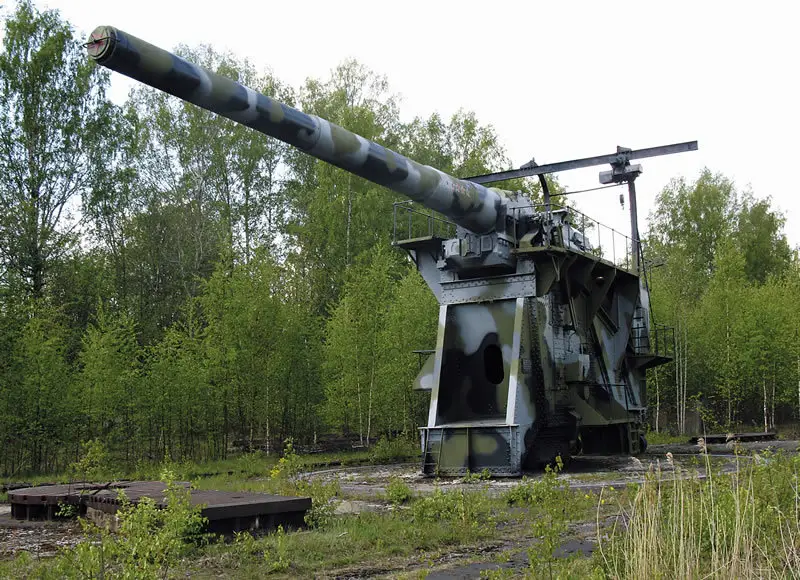
In previous materials I briefly described the evolution of twelve-inch guns in the Russian Imperial navy and ammunition for them. Now let's move on to the topic of testing shells.
But before that, a small remark.
Some errors
I would like to draw the attention of dear readers to a strange discrepancy in the sources, which, to my shame, I did not notice right away. It concerns the 305-mm high-explosive projectile mod. 1915, which was a 331,7 kg landmine arr. 1907, to which a huge ballistic tip (730,5 mm!) was screwed during the loading process. This shell can be seen “live” in S. Vinogradov’s monograph “Battleship “Slava”. The Undefeated Hero of Moonsund” on page 135.
So, Professor E.A. Berkalov indicates the total weight of the projectile with the indicated tip is 867 pounds (Russian) or 355 kg. However, in the “Album of Naval Artillery Shells” of 1934, the mass of the same projectile is indicated as 374,7 kg. I can only guess which of this is true, but taking into account the fact that the brass tip in the “Album” is depicted as thin-walled, presumably the correct mass is 355 kg. It must be said that the masses of other projectiles in these sources are the same.
And a little about TNT.
I believed that in all cases of equipping shells, phlegmatized TNT was used, which, without further ado, was called TNT. However, according to Professor E.A. Berkalov, only armor-piercing projectiles mod. 1911. High-explosive shells of the same year, at least before the experiments with Chesma, and possibly later, were filled with pure, non-phlegmatized TNT. Phlegmatization of TNT was needed to prevent the detonation of armor-piercing projectiles during penetration of armor, and it can be assumed that the projectiles arr. 1907 and earlier were equipped with TNT in a similar way.
Test criteria for armor-piercing projectiles
It is obvious that certain requirements should be established for an armor-piercing projectile, compliance with which will be verified by tests when accepting a batch of projectiles into the treasury. It is also quite clear that upon acceptance the projectile must demonstrate its ability to penetrate armor under certain conditions, by which we mean:
1. The speed of the projectile at the moment of impact on the armor plate.
2. Armor strength.
3. Armor thickness.
4. The angle of deviation from the normal (that is, from an angle of 90 degrees relative to the plane of the armor plate) at which the projectile hits the armor.
5. The state of the projectile after passing through the armor.
The importance of the fourth criterion is obvious. The easiest way for a projectile to penetrate armor is when it hits it at an angle of 90 degrees to its surface; the deviation from the normal in this case is zero. The greater the angle of deviation from the normal, the greater the path that the projectile must travel through the armor plate, and the more difficult it is to penetrate it.
But at the same time, you need to understand that in a naval battle you cannot expect ideal conditions for shells. To ensure zero deviation from the normal, the enemy ship needs to place its armored belt strictly perpendicular to the axis of the barrel of our gun, and then also adjust it so that the pitching compensates for the angle of incidence of our projectile.
In reality, ships, as a rule, do not fight on strictly parallel courses and are not exactly opposite each other, so shells almost always hit the armor at angles significantly different from the ideal 90 degrees. And this, of course, should be taken into account when designing and testing armor-piercing projectiles. Therefore, tests by shooting at normal cannot be considered sufficient; it is also necessary to test projectiles by shooting at an angle to the armor plate.
As for the condition of the projectile, this is no less important.
Will the mere fact of penetrating the armor be sufficient, even if the projectile itself is destroyed, or is it necessary to require that the projectile penetrate the armor as a whole?
From the standpoint of today, it is quite obvious that the projectile must pass into the armored space relatively intact. It is quite possible to allow a certain deformation and even partial destruction of the head part (as in the image below), but without opening the internal cavity containing the explosive.
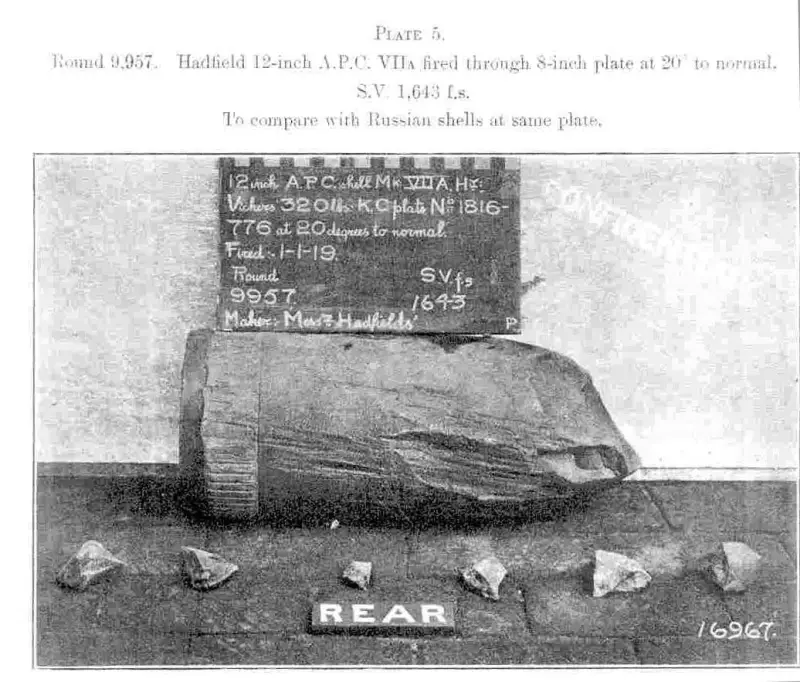
It is obvious that an armor-piercing projectile fulfills its purpose only if it passes behind the armor, penetrating to the vital parts of the ship, and there it produces a full-fledged explosion. If the projectile exploded in the process of breaking through the armor, then it will only cause fragmentation damage to the compartment located directly behind the armor. And if a projectile penetrates the armor without exploding, but after breaking, its explosive may not detonate at all, or it may detonate partially, which is why the force of the explosion will be significantly weakened.
Unfortunately, I could not find comprehensive information about the evolution of naval artillery testing, but what I managed to find is of some interest. Perhaps we can distinguish four periods of testing naval shells during the time of interest to us.
1886 – early 1890s (advent of cemented armor)
Why 1886?
Without a doubt, before testing armor-piercing shells, one should have learned how to produce them. In the second half of the 1886th century in Russia there were many experiments with both cast iron and steel projectiles for this purpose, both successful and not so successful. According to V.I. Kolchak, the turning point should be considered XNUMX, when the technology for their production was finally determined, and at the same time armor-piercing shells began to be ordered en masse to Russian factories. At the same time, principles for accepting shells into the treasury were developed, which, however, tended to change over time.
And, as will be shown below, not always for the better.
Well, in 1886 the following order was established. A sample of 2% from each batch of shells was subject to verification, of which 1% was subjected to mechanical testing of the metal, and another 1% was tested by shooting. At first, the size of the batch was not limited, but they soon realized that this approach was wrong, and established that the size of the batch to be tested was 300 shells.
Accordingly, out of every three hundred shells, the receiver selected 3 shells for firing testing, and the same number for testing mechanical qualities. The “most questionable” shells were subject to selection. The batch was accepted if two out of three shells passed the tests successfully. Moreover, if the first two shells tested by firing passed the tests, then the third was no longer tested, and the batch was accepted into the treasury. Likewise, if the first two shells were defective, then the third shot was not fired and the batch was rejected. All three projectiles passed mechanical tests in any case.
If the number of shells to be accepted was not a multiple of 300, then the following was done. When there were 149 shells or less remaining over a multiple of three hundred shells, they were taken into account as part of one of the “300-shell” batches, thereby reducing the sample to less than 1%. If there were 150 or more “extra” shells, then three shells were taken from them for mechanical testing and for firing testing, as for a batch of 300 shells.
Tests by firing armor-piercing shells were carried out on an armor plate mounted vertically on a frame, and the distance between the gun and the frame should not exceed 300–350 feet (roughly 91,5–106,7 m). This may seem strange, but until 1886 the distance from the log house to the gun was not regulated. However, you need to understand that in those years, domestic science took only the very first steps in studying how to overcome armor and determine the quality of projectiles.
There were, of course, some funny things along the way.
Thus, in the Russian Empire, although for a very short time, there was a very interesting practice of accepting armor-piercing shells in the manner of Lieutenant Mikhailovsky. The quality of the projectile was determined, just don’t laugh, please – by the sound. That is, in much the same way as we choose watermelons today. This practice was quickly abandoned, since test firing showed its complete unsuitability, but this method conveys the general level of theory and practice of those years well.
As for the angle at which the projectile hits the armor, Professor E.A. Berkalov claims that until the Russo-Japanese War, armor-piercing projectiles were tested almost exclusively by firing at armor plates in the normal direction, and high-explosive steel ones were not tested at all. V.I. Kolchak reports that the very first tests of steel armor-piercing shells, carried out on iron armor, were carried out at an angle from the normal of 25 degrees, but later, when moving to steel-iron armor, they were already shooting strictly along the normal.
I can assume that V.I. Kolchak is right. Since the transition to steel-iron armor happened very quickly, and soon it was replaced by cemented armor, E. A. Berkalov, most likely, simply did not delve into history question so as not to overload your textbook with redundant information.
Nevertheless, we have to admit that with the transition to steel-iron armor, for some reason we took a step back in testing armor-piercing projectiles.
To determine the thickness of the armor plate that the projectile should penetrate, the Ministry of the Navy used Muggiano's formula, which was aimed at calculating iron armor. That is, only the thickness of the plate, weight, caliber and speed of the projectile were taken into account as variables.
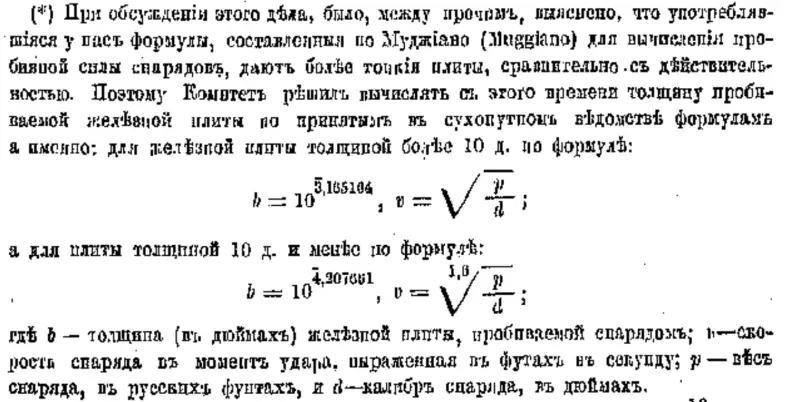
Accordingly, when they switched from steel armor to steel-iron armor, they continued to count according to Muggiano, making an adjustment for thickness. Initially, it was believed that an iron plate was equivalent to a steel-iron one, if the latter was one-sixth thinner. However, in France this figure was equal to a quarter, and in England – a third.
As a result, in Russia they came to the “French” meaning: iron and steel-iron plates were considered equal if the steel-iron plate was 25% thinner than the iron one - or if the iron plate was 33% thicker than the steel-iron one, if you like. However, Muggiano's calculations were of little help in the process of testing shells. The thing is that in that historical period the task of penetrating the armor of shells accepted into the treasury... was not set.
According to the rules in force after 1886, the test result was considered satisfactory if the projectile did not break after hitting the armor, did not have severe deformation and did not receive through cracks. Cracks were considered non-through if they did not allow water to pass through under pressure of 3 atmospheres. Whether the armor was pierced or not was considered unimportant and was not taken into account during acceptance.
As for high-explosive shells, unfortunately, only one thing is known for certain about them - when they were accepted, no firing tests were carried out. I do not know whether the mechanical properties of the steel were checked, but most likely such checks were carried out.
Early 1890s – 1905
In the early 90s of the XNUMXth century, some innovations occurred, which, apparently, were associated with the advent of cemented armor. Muggiano's formula was replaced by Jacob de Marre's formula.
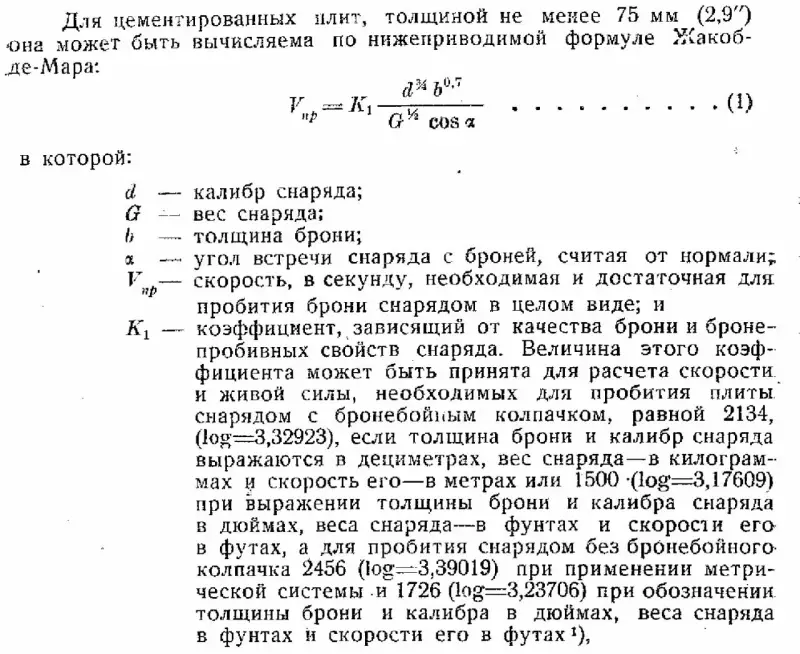

Unfortunately, I do not know the exact date of the transition to the de Marre formula. Obviously, this happened after the advent of cemented armor, but before 1903, when V.I. Kolchak’s book was published, in which he mentions the transition to this formula.
Probably, it is precisely the appearance of cemented armor that we owe to the next innovation. If earlier during testing it was not necessary for a projectile to penetrate armor, but it was necessary for it to remain intact, now everything has become the other way around. From now on, an armor-piercing projectile was considered valid if it penetrated the armor, but it was absolutely not necessary for it to remain intact.
There is a certain nod to industry here. They fired at iron armor at an angle of 25 degrees. to normal, we switched to a stronger steel-iron one - and now we are testing projectiles only in normal, but as the more durable cemented one appeared, we stopped demanding the integrity of the projectile. However, they began to demand mandatory armor penetration...
But, of course, all this looked strange, so after the Russo-Japanese War, in the technical conditions of 1905, both of these requirements were finally brought together: that both the armor be penetrated and the projectile not be broken.
Alas, the reasonableness of these conditions was compensated by the optionality of their fulfillment. Simply put, during testing of armor-piercing projectiles, the requirement for the integrity of the projectile after penetrating the armor was impudently ignored.
But the Russo-Japanese War did bring a certain positive: upon its completion, a test was introduced for armor-piercing shells with a deviation of 15 degrees from the normal. At the same time, unfortunately, I did not figure out whether they replaced normal shooting: it is more likely that they supplemented it.
As for the testing procedure, at least until 1903 it had no fundamental differences from the above. But then differences should have appeared. It is unlikely that three shells from a batch would be enough to carry out tests both in the normal and at an angle to it: but all this is just my guess for now.
Period 1905–1910
The main innovation during this period was the introduction of firing tests for high-explosive shells, because they had not been carried out in previous periods.
This innovation arose with the understanding that it would still be desirable for a high-explosive projectile to be able to penetrate armor, even if it was of relatively small thickness. As mentioned earlier, in order to increase the armor penetration of high-explosive projectiles mod. In 1907, in 1908, requirements for special training of the warhead were introduced.
The technical conditions for the manufacture, acceptance and testing of these shells (No. 191 - 1910) provided for firing testing. In this case, projectiles from 152 mm and above were tested by firing at cemented slabs half the caliber of the test projectile in thickness. As for shells of smaller caliber, they were tested against uncemented armor, since at that time they did not yet know how to cement slabs less than 75 mm thick. At the same time, 120-mm shells were tested against a 75-mm plate, 102-mm shells against a 68-mm plate, and 75-mm shells against a 50,4-mm plate. Shooting was carried out at a normal angle and at an angle of 25 degrees. To her. The tests were considered successful if the armor was penetrated; maintaining the integrity of the projectile was not required.
As for armor-piercing shells, during this period of time the production of those with a caliber of 152 mm and below was completely stopped, but, unfortunately, the exact date of production cessation is unknown to me. It must be said that, based on the results of the shelling of the experimental vessel "Chesma", the release of 203-mm armor-piercing shells was also abandoned, but this, of course, happened later.
Unfortunately, I did not find direct indications of how armor-piercing shells were tested in this period. Judging by the context of the sources, it should be assumed that the procedure did not change: that is, they shot at the normal and at an angle of 15 degrees. to it along cemented slabs, the thickness of which was determined by applying the de Marre formula. At the same time, the requirement for armor penetration while preserving the projectile as a whole existed, but it was apparently ignored during testing.
From 1911 onwards
For projectiles mod. In 1911, new testing rules were introduced.
An armor-piercing 305-mm projectile was tested by firing at a cemented armor plate one caliber thick, and high-explosive 305-mm projectiles - half a caliber. New 130 mm shells were tested against 75 mm cemented armor. As for smaller calibers, everything remained the same: 120 mm shells were tested against a 75 mm uncemented plate, 102 mm - against a 68 mm one.
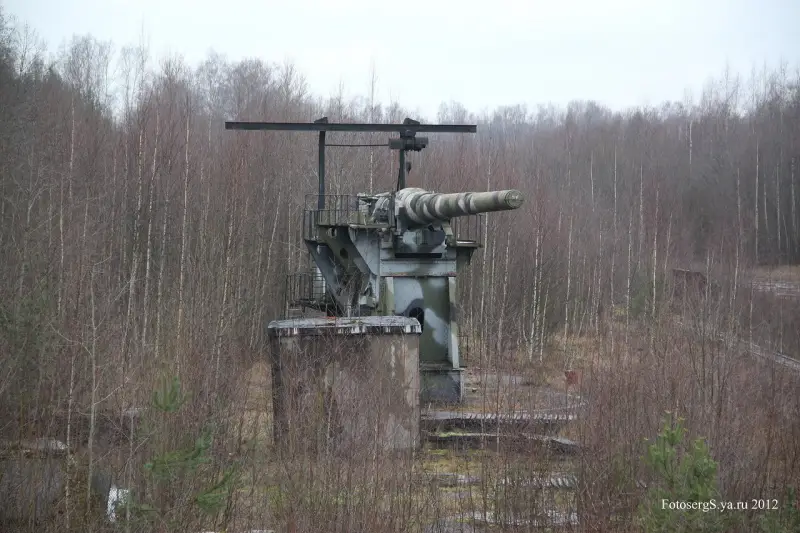
However, now a rule was strictly established, according to which the projectile had to penetrate the armor into the normal while maintaining the integrity of the hull, and this requirement was strictly fulfilled during testing.
As a result, it was possible to improve the overall quality of the projectiles, which is why they often pierced armor during tests without splitting, even with a deviation from the normal of 25 degrees, although this was not required of them by the test conditions.
Unfortunately, the question remained unclear whether these requirements applied to shells of earlier designs, and indeed what kind of armor-piercing shells, except mod. 1911, produced after 1911. But this issue goes beyond the scope of studying twelve-inch projectiles and therefore will not be considered here: in the next article we will talk about armor-piercing and ballistic tips.
To be continued ...
Information